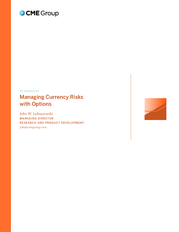Description
16 DECEMBER 2015
Sharply higher rates, say back to 5%, certainly would be a
negative for the economy but that is not in the cards.
Figure 2:
US Treasury 10-Year Yield & Core Inflation:
From September 2008 - present
4%
Fed Maturity Extension and QE
Programs
3%
10-Year Treasury
2%
We are now in an era of low inflation that is likely to last
until there is a credit boom – either due to a shift toward
an aggressively expansionary fiscal policy or a desire by
businesses and consumers to spend more and save less,
leading to more lending. Neither scenario is likely over
the next several years. Subdued inflation suggests a
slightly flatter yield curve (Figure 2).
1%
M
ar
-2
00
9
Se
p20
09
M
ar
-2
01
0
Se
p20
10
M
ar
-2
01
1
Se
p20
11
M
ar
-2
01
2
Se
p20
12
M
ar
-2
01
3
Se
p20
13
M
ar
-2
01
4
Se
p20
14
M
ar
-2
01
5
Se
p20
15
0%
Source: Bloomberg Professional (USGG10YR & PCE CORE)
More fundamentally, longer-term prospects for both
general and core inflation are quite subdued. The
tremendous competition in global trade is keeping a lid on
inflation.
Retiring baby boomers are spending less per capita than they did in their peak earning years and are starting to save more (about time). Banks are constrained by capital ratio regulations and their own risk management processes, and so are highly unlikely to go on a lending binge and expand consumer credit aggressively. Inflation in the 1.5%-to-2% range is likely for end-2016. Essentially, the Fed is now quite powerless to push inflation higher without the complicity of a very expansionary fiscal policy.
Through Quantitative Easing (QE), the Fed can buy all the outstanding government debt it wants and yet the impact on total spending will be next to nothing if the U.S. Government chooses not to increase its spending (i.e., adopt an expansionary fiscal policy). Zero rates matter very little, too.
Pushing the federal funds rate to 0% and getting the 10-year Treasury below 2% with QE did not impact government, business, or consumer spending in any material way. The U.S. economy’s natural growth rate is probably between 2% and 2.5% and that is what we have been getting very consistently since 2010. By the same token, small rises in rates and no QE will not matter either.
The difference for business and consumer borrowing (and spending) when interest rates range from 0% to 1%, or 2% is next to nothing. Amid heightened financial regulation and sophisticated interest rate risk management, the U.S. economy is actually quite insensitive to rate changes, at least in the 1% to 2% range. 2 .
Retiring baby boomers are spending less per capita than they did in their peak earning years and are starting to save more (about time). Banks are constrained by capital ratio regulations and their own risk management processes, and so are highly unlikely to go on a lending binge and expand consumer credit aggressively. Inflation in the 1.5%-to-2% range is likely for end-2016. Essentially, the Fed is now quite powerless to push inflation higher without the complicity of a very expansionary fiscal policy.
Through Quantitative Easing (QE), the Fed can buy all the outstanding government debt it wants and yet the impact on total spending will be next to nothing if the U.S. Government chooses not to increase its spending (i.e., adopt an expansionary fiscal policy). Zero rates matter very little, too.
Pushing the federal funds rate to 0% and getting the 10-year Treasury below 2% with QE did not impact government, business, or consumer spending in any material way. The U.S. economy’s natural growth rate is probably between 2% and 2.5% and that is what we have been getting very consistently since 2010. By the same token, small rises in rates and no QE will not matter either.
The difference for business and consumer borrowing (and spending) when interest rates range from 0% to 1%, or 2% is next to nothing. Amid heightened financial regulation and sophisticated interest rate risk management, the U.S. economy is actually quite insensitive to rate changes, at least in the 1% to 2% range. 2 .













